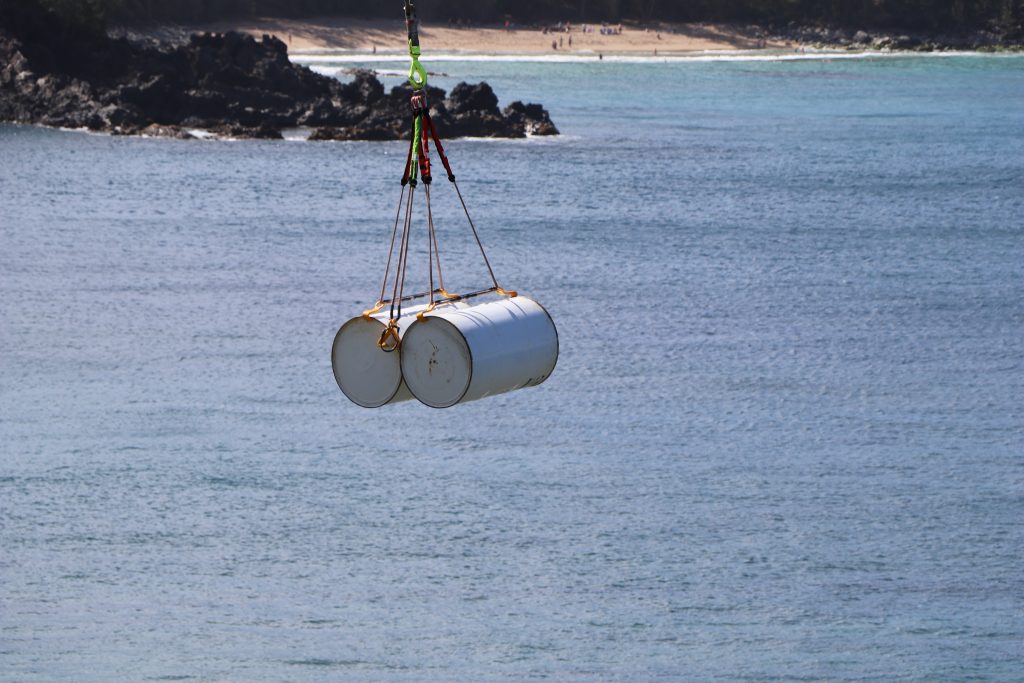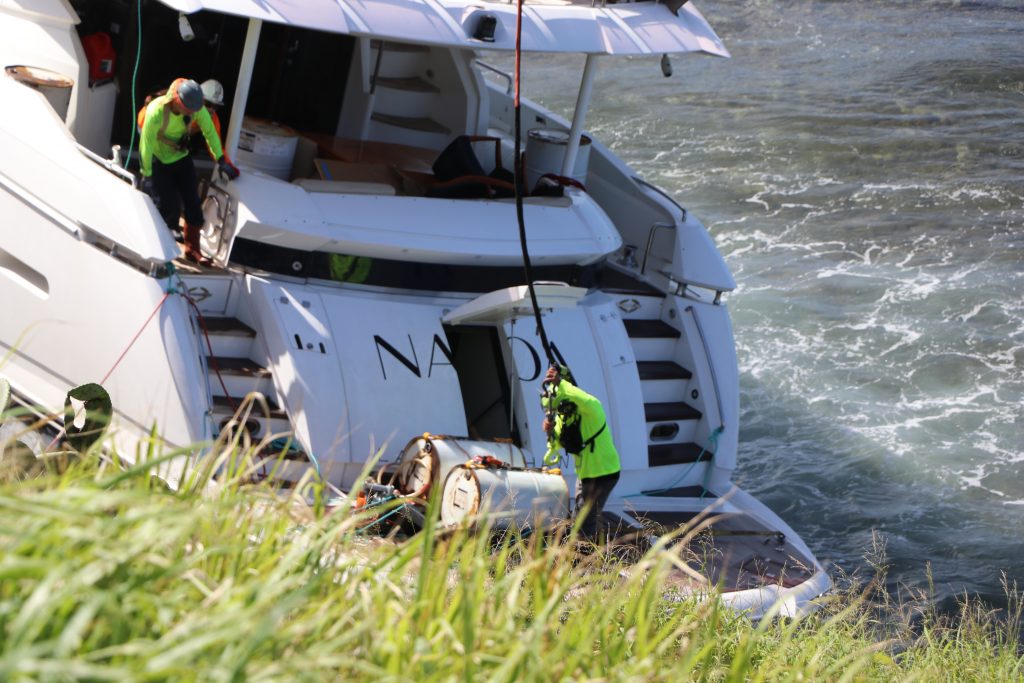Defueling of grounded luxury yacht on Maui done; $460,000 plus salvage operation next

On Saturday, defueling of the 120-ton, 94-foot luxury yacht “Nakoa” that was grounded along the shoreline of Maui was completed.
Next is the $450,000 plus salvage operation that is expected to begin on Sunday just outside the Honolua-Mokulē’ia Marine Life Conservation District, according to the Hawaiʻi State Department of Land and Natural Resources.
The U.S. Coast Guard assumed responsibility for the operation to remove an estimated 470 gallons of petroleum products, other hazardous substances, and 14 marine batteries off the yacht owned by Jim Jones.
The boat grounded six days ago. Although the area has day-use moorings with a time limit of two hours, Jones told media that he didn’t know the rules and stayed overnight with his family when one of the lines snapped and the boat hit the rocks.
The Coast Guard retained Sea Engineering of Honolulu as the contractor.
Sea Engineering hired Maui-based Pacific Helicopters Hawai‘i to fly 55-gallon drums of fuel from the boat’s stern to a staging area near the top of Līpoa Point, where they were transported by truck for disposal.
Chief David Jones of the Coast Guard Sector Honolulu called the defueling a success.
“For the last five days we’ve been working with the contractors from Sea Engineering and Pacific Helicopters, starting with getting on the vessel and putting absorbent materials down to collect any free petroleum products,” he said. “Then for the last three days we’ve had the flight operations. Folks on deck pumped any fuel, oils and other materials out of tanks and machinery spaces into the barrels, where they were airlifted to land to be hauled off for proper disposal.”
David Jones and others characterize safe defueling as a complex operation that takes time and expertise to plan and execute.
Sea Engineering President Andrew Rocheleau said the 2 1/2 days to defuel the yacht took longer because the vessel is listing, or leaning to one side, at the shoreline, so fuel moved into baffles within the boat’s 2,400-gallon tank.
“It took additional time to get into each of those compartments and either pump diesel out or use absorbent pads to soak it up,” he said.
Rocheleau and everyone working on the defueling and salvage of the yacht understand the frustration many people on Maui have expressed about it taking almost a week to try and float the boat off the nearshore rocks and reef.
“The process is actually fairly streamlined,” Rocheleau said.
Even before the Coast Guard and Department of Land and Natural Resources were notified by the vessel’s owner that he couldn’t pay for defueling or salvage of the 94-foot-long yacht, discussions and planning were already underway between the agencies and contractors, Rocheleau said.
“It takes time, as you have to assess risk to personnel, planning for safe helicopter operations, procurement and being sure that all government rules, regulations and laws are followed,” Rocheleau said.
Now that defueling is finished, the vessel is under the control of the state Division of Boating and Ocean Recreation. The division contracted Visionary Marine of Honolulu to salvage the vessel and the company is expected to begin work Sunday morning.
The dirt road leading into a viewing area at Līpoa Point will remain closed during the salvage operations for safety.
Sponsored Content
Comments






















